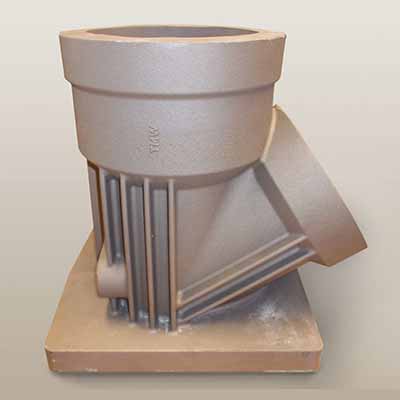There are a lot of different methods for manufacturing custom metal castings, with sand casting being one of the most common processes.
Using sand cores provides some unique advantages compared to using metal cores in die casting, or wax cores in investment casting – two of the most common competing services. Perhaps the most notable advantages of sand casting are the low tooling costs and the versatility of the process.
The Basic Advantages of Sand Cores in Custom Casting Services
By utilizing sand cores instead of competing metal casting services, foundries like Tazewell are able to produce a wider range of complex hollow parts with precise internal features. We can achieve intricate internal cavities, complex shapes and designs that would be difficult or impossible to produce using coreless molding techniques.
Die casting and investment casting also use complex cores to create such intricate components. However, these processes typically demand higher up-front tooling costs – especially in the case of die casting with metal cores. A separate disadvantage of investment casting is that it doesn’t work as effectively for large industrial parts – one of the specialties of Tazewell’s sand casting solutions.
Sand Cores for Casting Complex Internal Cavities and Geometries
As we touched on above, the essential role of sand cores is to create internal voids or cavities within a metal casting. These voids form the interior features of the final part, such as holes, passages, cavities, or other intricate shapes.
Let’s go into a bit more detail below:
Placement in Mold Cavity
During the mold assembly process, we precisely position sand cores within the mold cavity to define the shape and size of the internal features. Obviously, everything has to be perfectly in place before molten metal hits the mold.
Assembly and Gating
After the cores are placed and supported in the mold cavity, we close and clamp mold, getting it ready for casting. The gating system (sprues, runners, and gates) is also formed around the cores to facilitate the flow of molten metal into the mold cavity and ensure proper filling of the internal voids.
Molten Metal Casting
After preparing the mold, it’s time to pour molten metal into the gating system. The metal flows freely into the mold cavity and surrounds the sand cores, taking the internal shape of the desired part.
Cooling and Solidification
We then let the metal cool and solidify within the mold cavity. The sand cores actually help to conduct heat away from the casting, allowing for a more controlled solidification and minimizing the risk of defects such due to shrinkage or porosity.
Core Removal
After the casting has cooled and solidified, we open up the mold and remove the sand cores from the casting cavity. The removal process can involve mechanical methods such as vibration or chemical methods such as the use of solvents to dissolve the cores, depending on the complexity of the part and the type of core material used.
After cracking open the mold and removing the core, your custom metal castings are ready for secondary processing (such as custom CNC machined castings) or delivery.
Quality American Sand Casting Solutions Since 1945
No matter your industry or product application, Tazewell Machine Works provides superior American manufacturing quality for rough or machined castings. Our custom casting services are backed by a robust ISO 9001:2015 certified quality control system and over 75 years of excellence delivered from our foundry right here in Pekin, Illinois.
